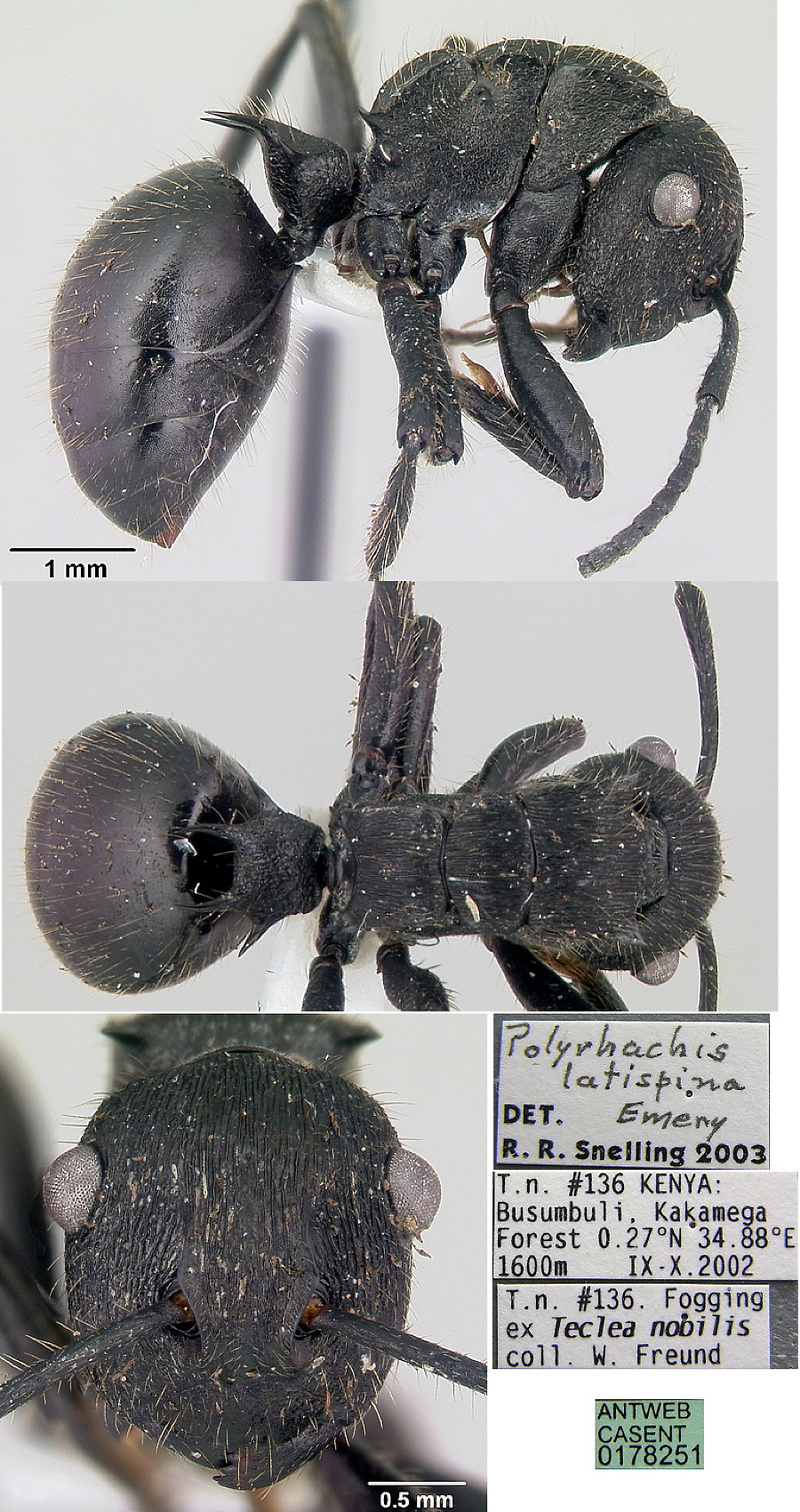Polyrhachis latispina Emery
  Type location Zaïre (Polyrhachis
(Myrma) atalanta new species,
Wheeler, 1922: 263, illustrated, queen; name preoccupied
so renamed as latispina by Emery, 1925: 206), from Kisangani
(Stanleyville), collected by Lang & Chapin - no type images on
Antweb (June 2018) Type location Zaïre (Polyrhachis
(Myrma) atalanta new species,
Wheeler, 1922: 263, illustrated, queen; name preoccupied
so renamed as latispina by Emery, 1925: 206), from Kisangani
(Stanleyville), collected by Lang & Chapin - no type images on
Antweb (June 2018)
junior synonym iperpunctata
(Polyrhachis (Myrma) iperpunctata n.
sp., Menozzi, 1942: 181, illustrated, worker) from Fernando Po I.,
worker holotype collected at Musola, by Eidmann - no type images on
Antweb (June 2018).
Also recorded from
Eala, Zaïre, by H.J. Bredo (Bolton, 1973b: 309); female and workers
described  . .
Rigato (2016) reported new findings but gave
no other information and no indication of sighting the Wheeler
type.
|
 The
photomontage is of a specimen from Kenya, compiled from http://www.antweb.org/specimen.do?name=casent0178251. The
photomontage is of a specimen from Kenya, compiled from http://www.antweb.org/specimen.do?name=casent0178251.
Note: I suspect this is a closely related
species rather than the Congo Basin type. Overall it is well below the
size range reported by Bolton (1973b); from the Antweb photos - HL
2.07, HW 1.75, CI 85; SL 1.83, SI 104 (?); PW 1.24. It also differs in
a number of ways. For instance the type has a reticulate-punctate
gaster, with overlying fine dense longitudinal rugulation - this is
wholly shiny. The pronotal sculpture is descibed by Bolton as "heavily
sculptured", this appears quite weakly sculptured. The sculpturation of
the petiole also differs. The type has parts of the legs and apices of
the funiculi that are yellow-brown, this is wholly black.
A specimen from Cameroun which matches that above from CAR can be seen at https://www.antweb.org/specimenImages.do?code=casent0227578
|